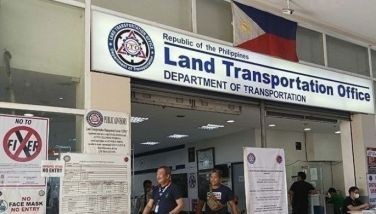OFW remittances hit $8.65 billion in Q1

MANILA, Philippines — Remittances from overseas Filipino workers (OFWs) sustained their growth in March, expanding by more than two percent in the first quarter, and remained a bright spot for the Philippine economy, according to the Bangko Sentral ng Pilipinas (BSP).
Personal remittances improved by 2.3 percent to $8.65 billion in the first quarter from $8.45 billion in the same quarter last year.
For March alone, personal remittances – computed as the sum of net compensation of employees, personal transfers, and capital transfers between households – grew by 3.1 percent to $2.89 billion from $2.8 billion in the same month last year.
According to the BSP, the increase in personal remittances in March was due to the 3.7 percent rise in remittances sent by land-based workers with work contracts of one year or more to $2.19 billion from $2.12 billion a year ago, as well as the 1.4 percent increase in the amount of money sent by sea and land-based workers with work contracts of less than one year to $625 million from $616 million.
The central bank also reported a 2.4 percent increase in remittances coursed through banks, to $7.77 billion from January to March compared to $7.59 billion in the same period last year.
The BSP reported that the growth in cash remittances from the US, Japan, Singapore, Taiwan, and Saudi Arabia contributed largely to the increase in remittances in the first quarter.
The US registered the highest share of overall remittances at 41.5 percent from January to March, followed by Singapore, Saudi Arabia, Japan, the United Kingdom, the United Arab Emirates, Canada, Taiwan, Qatar and Malaysia.
The combined remittances from the top 10 countries, the BSP said, accounted for 79 percent of total cash remittances in the first quarter.
For March alone, the BSP said cash remittances went up by 3.2 percent to $2.59 billion from $2.51 billion in the same month last year as receipts from land-based workers increased by 3.7 percent to $2.02 billion from $1.95 billion, while remittances from sea-based workers inched up by 1.3 percent to $573 million from $566 million.
Michael Ricafort, chief economist at Rizal Commercial Banking Corp., said OFW remittances remains a bright spot for the Philippine economy as it continues to reopen further with the National Capital Region (NCR) and nearby provinces placed under Alert Level 1 in March.
“Global economic recovery prospects somewhat improved as many countries around the word also further reopened their economies toward greater normalcy as fundamentally justified by recent significant easing in COVID cases since February and March after the spike in Omicron variant in January, thereby helping improve employment prospects for some OFWs,” Ricafort said.
However, Ricafort said Russia’s invasion of Ukraine could slow economic recovery prospects after the increase in the prices of global oil, energy, and other commodities could further lead to higher inflation and effectively slow down economic activities in host countries.
Ricafort also cited the aggressive rate hikes by the US Federal Reserve as well as the COVID lockdowns in China.
The chief economist of the Yuchengco-led bank said the continued rise in OFW remittances was offset by the weakening of the peso against the dollar which hit its lowest level in two and a half years or since August 2019.
Ricafort said the local currency has depreciated by about 2.8 percent since the start of the year at 52 to $1 level after appreciating by 6.2 percent last year, reducing the value of remittances sent home by OFWs needed to pay for the same amount of expenses in pesos.
Last year, personal and cash remittances grew by 5.1 percent to record highs of $34.88 billion and $31.42 billion, respectively.
For 2022, the BSP sees remittances increasing by four percent after missing the six percent growth target last year.
- Latest
- Trending































